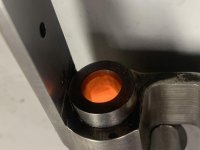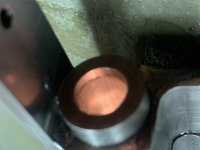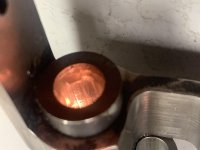While cleaning my 627-2 I noticed that the rifling in front of the forcing cone seemed worn smooth!! The rifling appears good when looking down the muzzle with light in the forcing cone. I have checked my other guns and they have distinct rifling starting at the forcing cone. I tried to take some photos and may try to upload them if someone wants to look. I have noticed I have not been shooting as well as I used to, but have pretty much figured it was an age thing.
I have been shooting jacketed 130 grain .38 Special ammunition in this gun for probably 20 years to the tune of maybe 50,000 rounds. Plus a lot of .38 lead bullets. I have a hard time believing my eyes that it could be shot out.
I have another 627-2 just 42 serail numbers later that clearly displays rifling at and forward of the forcing cone. It has been my backup and has not been used much at all. It seems to shoot a bit better, when I shot it las week.
The question is "What do I do now?" Is the barrel still good? Send it back to the factory for a new barrel? If they have any?
Has anyone shot out a Smith barrel?
I have been shooting jacketed 130 grain .38 Special ammunition in this gun for probably 20 years to the tune of maybe 50,000 rounds. Plus a lot of .38 lead bullets. I have a hard time believing my eyes that it could be shot out.
I have another 627-2 just 42 serail numbers later that clearly displays rifling at and forward of the forcing cone. It has been my backup and has not been used much at all. It seems to shoot a bit better, when I shot it las week.
The question is "What do I do now?" Is the barrel still good? Send it back to the factory for a new barrel? If they have any?
Has anyone shot out a Smith barrel?



